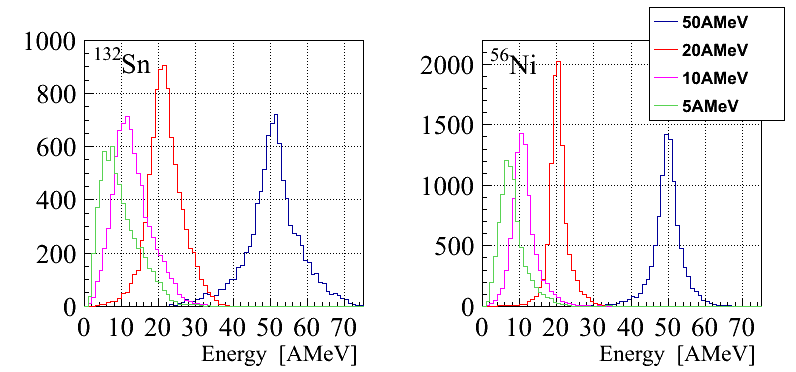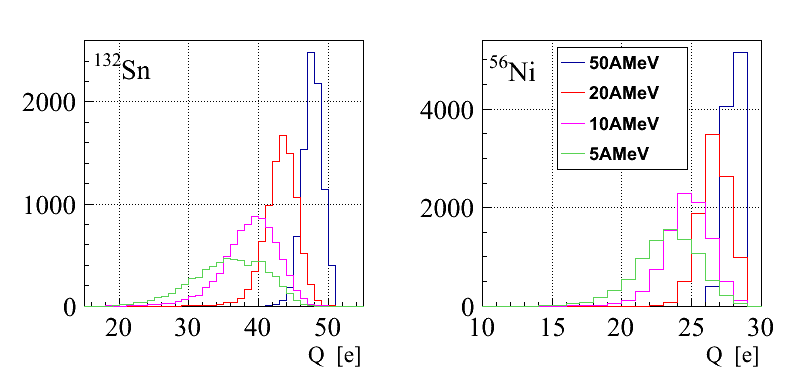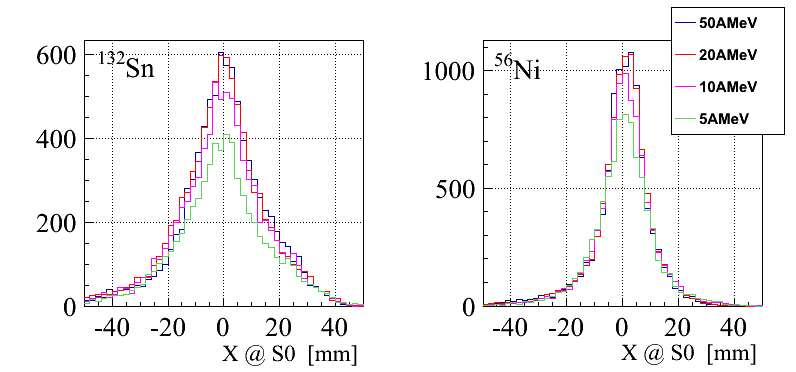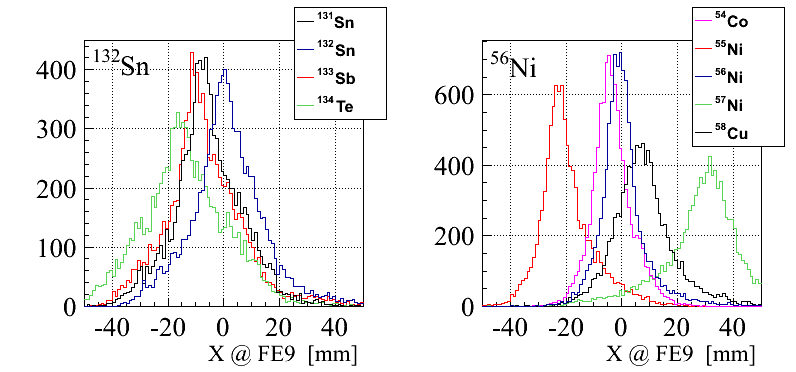Simulation Test のバックアップ(No.3)
- バックアップ一覧
- 差分 を表示
- 現在との差分 を表示
- 現在との差分 - Visual を表示
- ソース を表示
- Simulation Test へ行く。
Performance of the OEDO beam-line is being examined by simulation. Figure schematically shows the conditions of the simulation in typical cases of neutron-rich 132Sn and neutron-deficient 56Ni. Initial condition of 132Sn is calculated by assuming a production via projectile-fission reaction of 238U at 345A MeV, which is obtained by LISE++ code so as to maximize a yield of 132Sn.
Thickness of the degrader at F1 is determined by considering a matching between an energy of beam and phase of RF deflector. After F3 focus, two stage degrading scheme is considered. The 132Sn (56Ni) beam of 50A MeV is produced by a mono-energetic degrader at FE8 and is transported to the RF deflector. The RF deflector kicks beams by means of timing to focus the beam at FE9. The energy of 132Sn (56Ni) transported to a reaction target locating in S0 focus is 50A MeV or slowed down to 20A, 10A or 5A MeV by another degrader at intemediate focus FE9. By means of this dispersion, the wedge-shaped energy degrader at FE9 is employed to compress momentum spread for low-energy beam. In this simulation, wedge angle of 12 mrad was used for both cases of 132Sn and 56Ni beam to optimize decelerations.
 ホーム
ホーム 一覧
一覧 単語検索
単語検索 最終更新
最終更新 ヘルプ
ヘルプ


